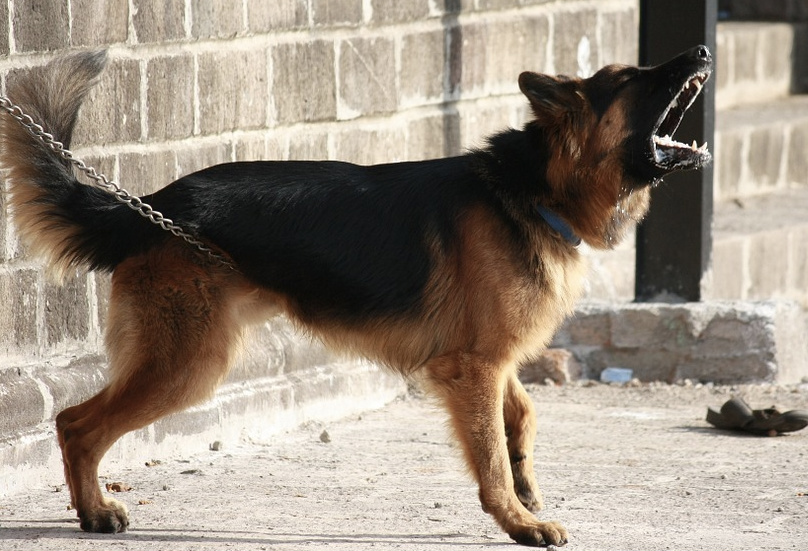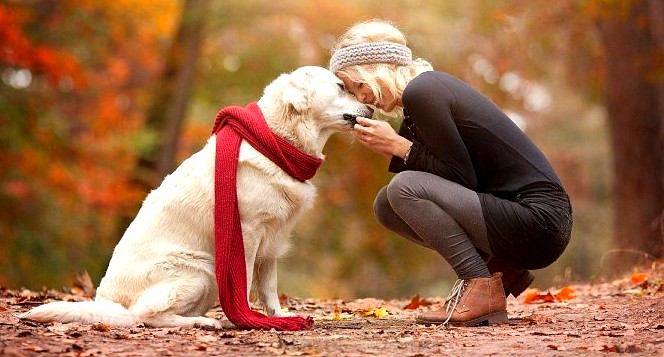Massage therapy is great for us pet parents, but did you know it can also be beneficial for your dog? It’s has been shown to help reduce blood pressure, pain, and stress in humans. What type of benefits can your dog get from a good massage?
Connect with a verified veterinarian in minutes. Licensed vets are available 24/7 to answer your questions. No need to worry about your furry family member.
Health Benefits of Massage for Dogs
Your fur baby probably enjoys being petted and scratched on a regular basis. But a massage is different in that your canine companion can derive health benefits from the experience. Massage benefits for dogs may include:
- Increased range of motion & flexibility
- Better digestion
- Improvement in muscle tone
- Reduction in inflammation
- Reduction of stress & anxiety
- Can calm the nervous system
- Boost the immune system
- Relieve pain
In addition, giving your fur baby a massage will strengthen the bond between you two. It’s also a good time to check your canine companion’s skin for new bumps or sore places he may not have had before. By giving your dog a massage, you’re also showing that you love him. He’ll eat this up!
Areas that are Great to Massage on Your Dog
Massage of certain parts of your dog can be particularly beneficial. Let’s take a look:
Head: massing your fur baby’s head can increase blood flow to muscles and blood vessels here. The muscles here can suffer from spasms and tension, just like in other parts of your fur baby’s body. A head massage can do wonders to relieve tension, stress and muscle stiffness.
Ears: this is another area where tension can build. When massing your pup’s ears, be sure to use light pressure so you don’t hurt his ears or cause pain.
Neck: dogs can have a stiff neck (and we don’t mean stubbornness, though that’s also true), just like us. You can watch for this: if your canine companion turns his entire body to look at something, this may be an indication his neck is stiff and painful.
Back: this is another area that can benefit from improved blood flow, along with easing tense or stiff muscles. One note—if your dog has a back injury, be sure to only massage the area according to the vet’s instructions, as a massage could lead to additional damage.
Stomach: if your fur baby’s off his food, a tummy massage may be just what he needs! A massage can improve digestion, relieve any tension and increase the blood flow in this area.
Legs: this is another area where dogs are prone to strains, tension, along with arthritis and joint issue. Massage can help relieve these problems and pain, too.
Paws: think of how good a foot massage feels, then you’ll understand why your fur baby may enjoy a dog paw massage. It works to relieve tension and increase blood flow in the area. You can also use this time to check your dog’s feet for any problems.
Chest: massaging this area can sooth and calm your pup. It’s also great to help lower blood pressure and increase blood flow in the circulatory system.
Always remember that massage should feel good to your dog. If he shows any signs of anxiety, pain, or he tries draw back from you, then he may be feeling pain and/or is somehow not comfortable.
Be sure to stop the massage if he’s not enjoying it. Now we’ll take a look at various types of massage that can help your fur baby feel better!

Review symptoms, medications & behavior to keep your pets healthy with a Vet Online in just minutes.
Ask a Vet Live NowHow to Massage Your Dog to Sleep
Dogs, just like their pet parents, can have trouble falling asleep. This is especially the case with older dogs who may have painful and sore areas due to arthritis and other pain conditions. Younger dogs, on the other hand, may feel restless after a busy, exciting day. If your fur baby can’t get to sleep, this could also keep you awake. To help you both, massage can help to get your dog to relax and/or ease pain and soreness. Giving him a massage every night can be a regular bedtime routine for you both to look forward to. Here are some methods you can use to help your fur baby get to sleep:
One Side to Sleep: have your fur baby lay on his bed (or your bed, if that’s where he usually sleeps). Keep the room quiet and the lights low. Next, if your pup lays on his side, help him get comfortable by starting to rub his abdomen in one direction. After the tummy rub, you can move to the side of his head that’s facing up. Use short, circular strokes to massage his ears and jowls. Next, move to his neck and use similar circular motions, then you can work on his legs and paws. To ease tension, you can gently pull the skin and muscles on his legs toward his paws. It’s also a good idea to rub his front paw in your hands and massage the pads and in between his toes.
If your fur baby’s still awake, but relaxed, rub his tummy again until he finally falls asleep.
Ears to Tail: get your dog settled on his bed (or yours), with a quiet room and low lights. You can then start massaging his ears gently. Work from just behind his ears to the tips, using small circles, with a slow and methodic motion. Next, work on his neck with long strokes to knead his neck muscles. Now you can massage your fur baby’s back using long strokes from the neck, going into small circles on either side of his spine. Lastly, massage your pup’s legs, starting at the top of each leg and working down to the paw.
How to Massage a Dog with a Pinched Nerve
A pinched nerve is nothing to mess with. You’ll need to contact your vet before giving your fur baby a massage for this type of issue. Massage can definitely help ease your dog’s pain if he has a pinched nerve. It can help if the muscle is constricting a nerve, or even to relieve fascia that’s restricting nerves. Some dogs may also suffer with muscle spasms, which may or may not be painful. When giving your dog a massage for a pinched nerve, avoid using deep pressure or intense rubbing. Doing this could harm your fur baby by making the condition even worse. If your pup is relaxed as you give the massage, then it’s OK and you can keep going. However, if he shows signs of being uncomfortable, then it’s time to stop. You could be causing some pain or muscle spasms. Keep the pressure firm, but not heavy.
Dog Massage for Back Pain
Again, be sure to check with the vet to see if it’s safe to massage your fur baby’s back. Massage could actually cause more damage, depending on the health condition that’s causing your canine companion’s back condition. If the vet gives you the go ahead, then you can try this type of massage:
Flat hand: put one hand on your fur baby’s chest, then flatten out your other hand and place it over your dog’s back, just behind the shoulder blades. Place your thumb on one side of the spine and your fingers on the other. Keeping pressure firm, but not heavy, slowly massage his backbone from his head all the way to the end of his tail. Always remember to start from your dog’s head and then work down the length of his body. And make sure to massage from head to tail, keeping your pup’s fur going in the same direction. You can repeat this action 3-5 times until your dog has fully relaxed.
Dog Massage for Slipped Disc
A slipped disk, also called Intervertebral Disc Disease (IVDD), is a painful condition in your dog’s spine. This is actually a degenerative condition that is caused by a disc (or discs) that have become dehydrated or injured. This condition can be genetic. The damaged disc can bulge onto the spinal cord, or can even burst, causing damage to the spinal cord. There are two types of slipped disc; onset may be gradual or may happen suddenly. This painful condition can affect any dog, but it’s most commonly seen in dogs with short legs and longs backs, such as the Corgi, Basset Hound and Dachshunds.
If your dog hasn’t been diagnosed with IVDD, but you see these signs and symptoms, your fur baby should see the vet for an exam:
- Hesitation running or jumping
- Wobbly legs, possibly staggering when he walks
- Complete paralysis (most often seen in the back legs)
- Arched back & tight tummy
- Pain when touched on the back
- Dog dragging feet
Massage can help relieve your pup’s painful condition; however, you should always check with your vet before giving your dog a massage. A massage could cause additional pain and damage if not performed the right way. When massaging your dog’s back, be sure to use a gentle touch. Pressing on the slipped disc can greatly increase the pain. Think of how a painful toothache feels when touched, and you’ll quickly under the pain caused by IVDD. If you come across a tender area, then pass on, but make note of where the tender spot is. And if your fur baby is showing signs of discomfort, pain, or stress during the massage, then be sure to stop right away. Giving your fur baby a massage has many of the same benefits as it does for pet parents. It can be used from everything to help your dog go to sleep, ease pain and more. If you’re unsure of whether or not massage may good a good option for your canine companion, be sure to call your vet. They will have the best advice for your dog and will be able to share the best techniques for giving your fur baby a good rub down.
Connect with a verified veterinarian in minutes. Licensed vets are available 24/7 to answer your questions. No need to worry about your furry family member.

Julie
Julie is a graduate of the University of North Carolina, Wilmington, where she studied Animal science. Though contrary to the opinion of her parents she was meant to study pharmacy, but she was in love with animals especially cats. Julie currently works in an animal research institute (NGO) in California and loves spending quality time with her little cat. She has the passion for making research about animals, how they survive, their way of life among others and publishes it. Julie is also happily married with two kids.
Review symptoms, medications & behavior to keep your pets healthy with a Vet Online in just minutes.
Ask a Vet Live Now



